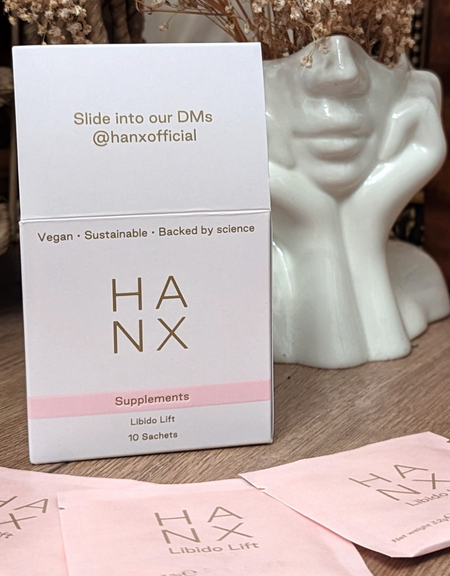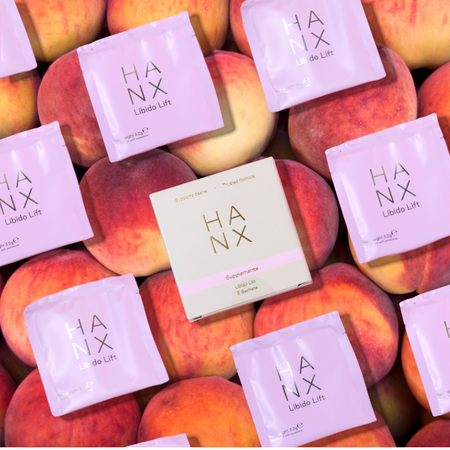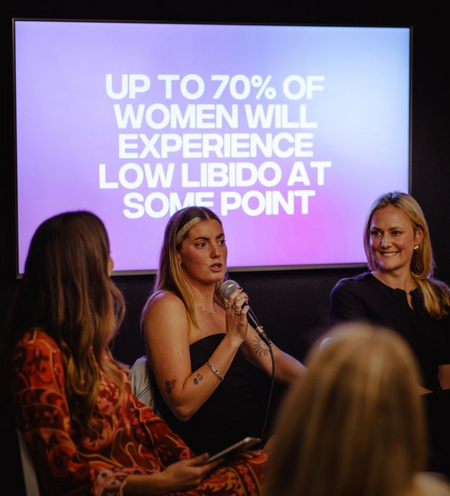Will GLP-1 Medication Change Food Culture As We Know It?
Gourmands, this one's for you. With GLP-1 weight management's positive impacts including reduced appetite, there's a fascinating trend in patients reporting a change in the kinds of foods they fancy, too. So, what does this mean for our treat-focused culture? With insights from a fascinating Canvas8 discussion with insights from Amy Bentley, Professor in the Department of Nutrition and Food Studies at New York University, join us to explore this cultural shift and what weight management medication might mean for the future of food, connection, and health.
How GLP-1 Weight Management Changes Food Tastes
Consider yourself a bon vivant when it comes to all things gourmet? You're not alone. Some of the self-confessed foodies on the weight management programme at HANX initially voiced their worries that they wouldn’t find delight in food anymore when taking Mounjaro (tirzepatide). Fear not - if you're also concerned by the prospect of your comfort foods suddenly lacking appeal, you might find that this taste development actually opens doors to new culinary adventures…
If academics are right, the recent rise of GLP-1 medications including Mounjaro or Wegovy (semaglutide) could well be on course to shape not just our waistlines, but broader society’s perspectives on food, indulgence and pleasure.
Those who have been prescribed GLP-1 medications often report a significant shift in taste preferences. Foods they once craved (typically ultra-processed options high in salt, sugar, and fat) can suddenly lose their appeal. Instead, patients can find themselves drawn to:
-
Umami-rich foods with natural savoury profiles e.g. olives, seaweed, soy-based foods
-
Fresh produce with vibrant, natural sweetness e.g. tomatoes
-
Minimally processed proteins without heavy sauces e.g. seafood and steak
-
Sour and tangy profiles e.g. fermented foods and kombucha
-
Interesting textures beyond ultra-processed, uniformly soft options
-
Naturally sweet options e.g. ultra-ripe mangoes
This fascinating shift suggests GLP-1 weight management could kickstart a recalibration of the palate, with some patients reporting that whole foods taste more vibrant and satisfying than before. What's particularly fascinating is how this aligns with nutritional science - the very foods that become more appealing are typically those that support overall health. Put simply: once a foodie, always a foodie (albeit with a slightly different Ocado shopping list!).
This could have a broader impact beyond those taking GLP-1 medication alone. There is a real possibility that broader society’s tastes might change for the healthier, too. With one EY study reporting that GLP-1 patients claim their consumption of snack foods dropped up to 60%, it's likely we will manufacturers moving to improve the nutritional quality (and calorie count) of their products. Alongside new motivations for manufacturers, Bentley highlighted shifts in menu development in domestic settings. With different generations living together as one household, a switch to healthier meals could have a positive impact not just for GLP-1 weight management patients, but also children, older generations and roommates. The act of cooking with more minimally processed ingredients could permeate outwards, influence those in close quarters and have a positive effect beyond one plate alone.
Reimagining Social Connection Beyond the Plate
As humans, food has always been central to how we connect, celebrate, and create meaning together. From holiday feasts to business dinners, food rituals anchor our social experiences. With GLP-1 medications potentially reducing appetite and changing taste preferences, those taking them face a new challenge: navigating social spaces designed around food consumption. Social eating on Wegovy can often feel daunting given the need to follow a low-calorie diet. This can be especially tricky if, due to stigma and taboos around this medication, you would prefer not to disclose that you are on a weight management journey with its support.
This shift raises important questions:
What happens to social bonding when food and alcohol become less central?
Socialisation around alcohol is very common, from post-work drinks to a glass of wine in front of the TV to help you unwind, or a cocktail-filled brunch with friends. In fact, the average UK woman drinks 9 units of alcohol per week.* However, when taking GLP-1 weight management medication, remember that alcohol carries a heavy calorie count and can even cause nausea, dizziness or other unwelcome side effects. Filling a chicken wine-shaped hole can be challenging, especially when alcohol might be a crutch in social situations. So, as the number of people taking Mounjaro rises, this is a real opportunity to reimagine our tastes when it comes to beverages - and how we can make socialising more inclusive for those who are not consuming alcohol (for weight, addiction, personal or religious reasons). When drinking remains part of the occasion, we might see a gravitation towards lighter, low-to-no ABV options that emphasise quality over quantity. Think champagne with dryer taste profiles and less residual sugar.
Can we create new celebratory rituals that don't centre exclusively on eating and drinking?
Rather than seeing this as a loss, this could be a really exciting opportunity to expand our cultural repertoire. Celebrations could incorporate meaningful activities beyond eating. We loved that Bentley highlighted how reading a loved one your favourite poetry could celebrate a meaningful anniversary. Need celebration inspiration? How about focusing on wellness activities such as spa days or getting out in the fresh air together. For our dedicated foodie friends, indulgence doesn’t have to be totally off the menu. We might start to see trends for birthday cakes adorned with fresh fruit, rather than thick, sugary frosting. Instead of heavy, rich communal dishes, we might opt for vegetable-forward dishes that celebrate bright colour and crisp textures to keep our palates engaged. We reckon we’re on the horizon of the most exciting era for socialising yet…
A New Food Landscape
So, where does this leave food producers, chefs and restaurants? Far from limiting options to ‘boring’ healthy foods, this shift could create an exciting space for thoughtful innovation. The stage is set for expanded flavour profiles beyond the dominant sweet-salty paradigm that’s become standard, especially in US food culture. For example, Japanese cuisine heavily features earthy mushrooms, fresh fish and seaweed alongside probiotic-rich fermented ingredients, whilst the Spanish diet, rooted in the Mediterranean mindset, incorporates fresh vegetables, lean meats and olive oils and seafood.
Alongside flavour, there is vast scope to introduce more interesting textures that provide sensory satisfaction. We might see a rise in crispy elements that surprise and tantalise our tastebuds. Not only does eating crunchy-textured foods offer stress relief benefits, but studies show that they can encourage a more mindful approach to eating by reducing the pace of consumption and supporting weight loss.
Bentley also highlighted a shift in perspective towards socially-conscious food choices that consider sustainability and ethics elements that count towards the deliciousness of our food.
Not only could this new landscape support personal weight management journeys, but it could also reset our mindset when it comes to what indulgence really means. For example, a perfectly ripe, juicy melon slice harvested in season by a well-compensated worker could well be considered as luxurious as a slice of Death by Chocolate cake with a swirl of whipped cream.
Rather than bunged in hot water and boiled to mush, properly prepared brussels sprouts (not boiled to death!) roasted til crisp, dressed with lemon juice and a drizzle of good quality olive oil could be seen as a real treat. We’d love to see this attitude expand into broader society, and for everyone to consider vegetables the star of a meal, rather than an afterthought.
Building New Habits
Whether you're on a journey to your health goals with the support of GLP-1 weight management medication or simply exploring healthier eating patterns, remember that taste is adaptive. Real talk: it can be jarring to leap straight from a diet rich in processed foods into plates of leafy kale and lean proteins. Food anthropologists remind us that children typically need 10-15 encounters with a new food before accepting it, and adults aren't so different.
Some practical tips on getting the taste for healthier foods:
-
Experiment with cooking methods that enhance your ingredients’ flavours (like air frying or roasting vegetables to bring out their natural sweetness)
-
Get adventurous and explore global cuisines that celebrate sour, bitter, and umami profiles. We’re big fans of homemade mushroom ramen with quick pickled carrots for extra crunch!
-
Focus on quality ingredients rather than quantity. Maintaining willpower in the face of sugary treats on offer in the supermarket can test even the strongest of us all. However, resisting chocolate-packed mini cakes can free up budget for better quality provisions.
Consider the social context of eating, too. We’re as guilty as anyone of grabbing snacks on-the-go (the parents on Team HANX especially!), but it’s key to remember that sharing meals is an intrinsic bonding experience. The endorphins released by our body whilst eating have even been shown to ramp up when we share food together. Bentley highlighted that some people actually find food especially delicious when it’s cooked by someone they love. The lesson? Coming together with friends, family and/or lovers to consume in community not only can strengthen social ties but possibly even convert you to delicious and healthy new favourites.
The Future for Foodies
As humans, our relationships with food and community are ever evolving. Whether you’re a truffle-obsessed foodie or plain old ambivalent about artichokes, the rise of GLP-1 weight management medication to support weight management journeys could herald a new future of socialising for us all. Far from suppressing appetite for life, Mounjaro and Wegovy are on track to reshape our food culture in ways that promote genuine wellness, meaningful connection, and greater joy in eating - whatever form that takes for you.
What changes have you noticed in your relationship with food whilst on the weight management programme at HANX? We'd love to hear your experiences - drop into our DMs!
Want more?
-
Focusing on your health goals? Take the consultation now to find out if you’re eligible for the weight management programme via HANX.
-
Can you drink alcohol whilst taking weight management medication? Find out from our in-house medical experts.
-
Why am I being shamed for taking Mounjaro? We dive into the taboos around GLP-1 medication.






















